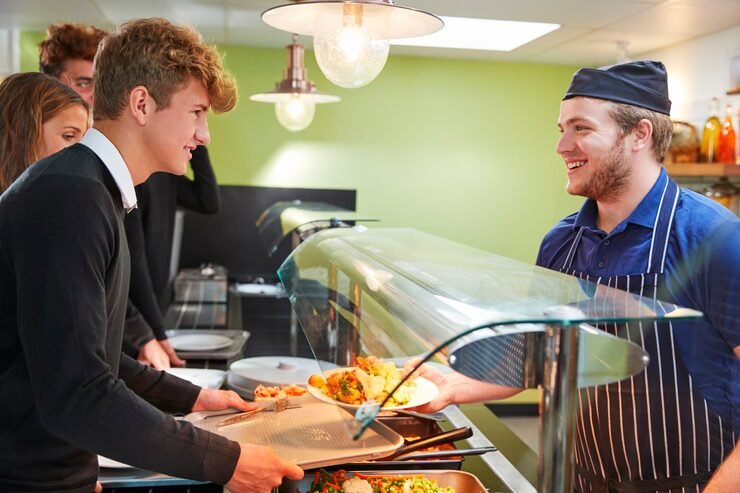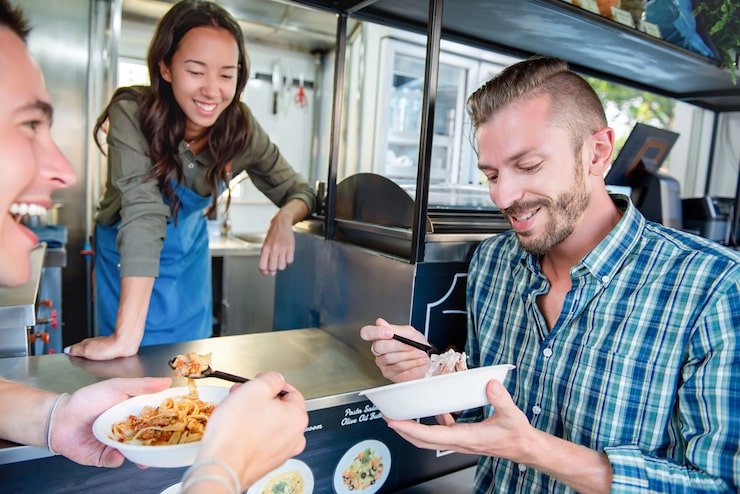Table of Contents
- Food Van Finance: What it is and why it matters
- Understanding the Food Van Business in the U.S.
- What is Food Van Finance?
- There are many types of financing options for food vans.
- Food Van Finance Eligibility Requirements in the U.S.
- What is the cost of a food van?
- Table: Financing options for food vans vs. Features
- Food van Financing: Pros and cons
- What’s the difference between buying a food van and leasing one?
- What are interest rates and loan terms?
- Food Vans: Government Grants and Programs
- Alternative Financing Options for Food Vans
- Table: Estimated monthly payments by loan size
- How to improve your chances of loan approval
- What to avoid when financing a food van
- How important is credit score in food van finance?
- Manage Cash Flow after Financing your Food Van
- Case Study: Successful food van financing in the U.S.
- FAQs about Food Van Finance
- The Next Step
1. Introduction: Why food van finance matters
Food trucks and vans are a booming industry in the United States, with an estimated value of nearly $1.5billion annually. Food vans offer a more affordable way for aspiring entrepreneurs to enter the food service industry compared with traditional restaurants.
Starting a food truck business isn’t inexpensive. Costs can easily add up to $50k-$120k. Food Van Finance can help small businesses secure the funding they need to launch their mobile kitchens.
2. Understanding the Food Van Business in the U.S.
The food vans are very popular in the U.S.
- Lower overhead than brick and mortar restaurants
- Mobility allows entrepreneurs to reach a variety of customers.
- Flexibility To experiment with menus.
Food vans are a mainstay of American dining culture. From New York’s hot dog trucks to Los Angeles’ taco trucks.

3. What is Food Van Finance?
Food Van Finance is the term used to describe financial products, such as loans, leasing, or credit lines, that entrepreneurs can use to buy, lease, and upgrade food vans.
This is similar to auto finance but tailored for businesses use. It often includes considerations such as kitchen equipment, compliance with health codes, and insurance.
4. There are many types of financing options for food vans.
Entrepreneurs in the U.S. usually choose from:
- Equipment Loans – Finance specific kitchen equipment.
- Vehicle Lending – Purchase of new or used vans.
- Business Term Lending – Lump-sum financing for startup costs.
- Leases– Rent instead of purchasing a van outright.
- SBA loans – Backed by U.S. Small Business Administration.
- Merchant cash advances – Short-term financing based upon future sales.
5. Food Van Finance Eligibility Requirements in the U.S.
Most lenders look at:
- Credit Score (680+ for the best rate)
- Business plan (showing projected profitability)
- Collateral
- Time for Business

6. What is the cost of a food van?
In the U.S., on average:
- Used Food Vans : $30 – $70,00
- New custom-built food vans: $80,000 – $120,000+
- Conversions of existing van range from $40,000 to $80,000
These costs can be spread out over a longer period of time with the help of financing.
7. Table: Financing options for food vans vs. Features
| Financing Option | Best for | Loan Amount Range | Term Length |
|---|---|---|---|
| Equipment Loan | Buying kitchen equipment | $5K – $100K | Ages 2-7 |
| Vehicle Loan | Vans for sale: New and used vans | $20K – $100K+ | Ages 3-7 |
| SBA Loan | Small businesses & startups | $50K – $5M | Age limit: 25 years and older |
| Rent | Low upfront costs | Variations | Ages 2-5 |
| Merchant Cash Advance | Need fast cash? | $5K – $250K | Short-term |
8. Food van Financing: Pros and cons
Pros:
- Access to capital without upfront capital
- Credit business.
- Tax Benefits on Interest and Depreciation
Cons:
- Cash flow is reduced by monthly repayments.
- Interest rates can be very high.
- You may be subject to repossession in the event of default.
9. What’s the difference between buying a food van and leasing one?
- Lease: Less upfront costs but you do not own the van. The best option for short-term usage.
- Buying (with finance): higher long-term value. Best for long-term investors.
10. What are interest rates and loan terms?
- Traditional Vehicle Loans: 6 – 12 APR.
- SBA Loans: 5% to 9% APR.
- Merchant Cash Advance: APR of 20% or more (expensive, but fast).
The loan terms can range from two years for equipment up to 25 years for SBA loans.
11. Food Vans: Government Grants and Programs
The Small Business Administration offers a variety of financing options.
- SBA Loan Program– General Business Expenses
- Microloans from the SBA up to $50,000 for startups.
- Local State Grants Some states provide funding for food entrepreneurs.
12. Alternative Financing Options for Food Vans
- Crowdfunding — Platforms such as Kickstarter to support the community.
- Angel Investors If you are planning to scale up into multiple vans.
- Personal loans– For entrepreneurs who have a strong credit rating.
13. Table: Estimated monthly payments by loan size
| Loan Amount | Interest Rate | Term Length | Approx. Approx. |
|---|---|---|---|
| $30,000 | 8% | 5 Years | $608 |
| $60,000 | 7% | 7 Years | $907 |
| $100,000 | 6% | 10 Years | $1,110 |
14. How to improve your chances of loan approval
- Maintain a score of 680 or higher.
- Prepare a detailed Business Plan.
- Prove the market demand.
- Savings for a Down Payment (10-20%)
15. What to avoid when financing a food van
- Take high-interest loan without comparing your options.
- Overestimating the ongoing costs (maintenance permits, insurance)
- Borrowing more money than you can repay.
16. How important is credit score in food van finance?
The approval of a loan is heavily influenced by your credit score.
- Excellent (720+).: Best terms and rates.
- Good (680-719): Competitive rates.
- Fair (609-679) : High interest rates.
- Poor (600): Limited options and alternative financing only.
17. Manage Cash Flow after Financing your Food Van
Consider: Repayments are only one part of your financial picture. Consider:
- Seasonality
- Operating costs (fuel, permits, staff wages).
- Marketing costs to increase sales
Cash flow management is important to ensure that your loan does not overwhelm your profits.
18. Case Study: Successful food van financing in the U.S.
Maria, a Texas entrepreneur, wanted to start a Mexican food van. The startup costs amounted to around $85,000. She received a $60, 000 SBA microloan. She also invested her own savings of $25,000. In two years, she doubled her revenue and expanded to a second vehicle.
Here’s how can help you turn an idea for a food van into a successful business.
19. FAQs about Food Van Finance
Q1 : Can I finance a food van with bad credit?
Yes, you can but it may limit your options to high-interest loans or other lenders.
Q2 – How much is the down payment for a food van?
Typically, 10-20% of its cost.
Q3 Can I finance the van as well as the kitchen equipment?
Yes. Many lenders offer combined packages of financing.
Q4 What is the best loan to start a food van business?
Q5 – Is leasing better or financing? Leasing may be cheaper up front, but financing will build ownership and long term value.
20. The Next Step
The food van is one of the best entrepreneurial opportunities available in the U.S. They’re here to remain, thanks to their lower start-up costs and increasing consumer demand.
The right financing is often the key to success. financing for food vans offers a variety of options, from SBA loans to equipment financing and leasing to alternative funding.
Compare financing options and prepare a solid business plan before you start building your dream food van.







